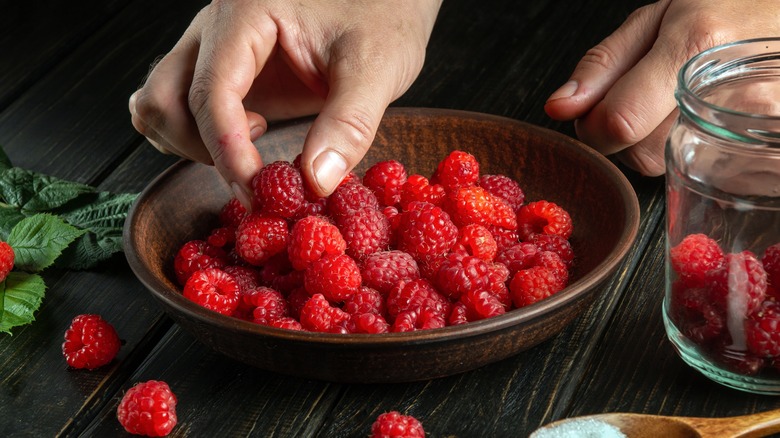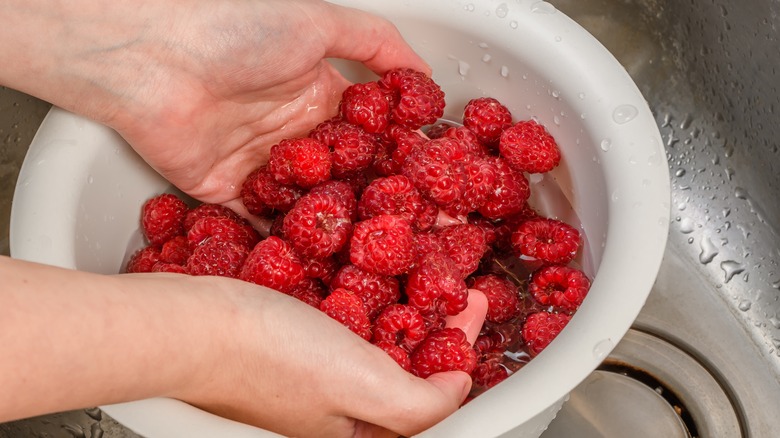How To Deep-Clean Raspberries With Water And Vinegar
You should always wash fresh fruits before eating — but it's tempting to leave delicate berries unwashed to avoid doing any damage. Blackberries and blueberries are somewhat sturdy, but raspberries are some of the most fragile types of berries. Too much pressure or even a slight mishandling turns these dainty berries into squished jam. So how exactly do you handle washing raspberries without ending up with a mushy mess?
A deep clean for berries that has become increasingly popular only requires one extra ingredient aside from water: Vinegar. This pantry staple can kill off certain bacteria and mold , though it's not a catch-all disinfectant. White or apple cider vinegar works best to avoid imparting any flavor to the berries — a ratio of 1 part vinegar to 4 parts of water can be used. Let the fully submerged berries soak in the mixture for one minute before draining and rinsing in a colander with cool water.
Is vinegar totally necessary? The most common way to clean berries is without vinegar, just using a gentle rinse of cold water to avoid damaging the berries. The USDA does suggest rinsing all fresh produce under cold running water before eating to remove or reduce dirt, debris, bacteria, and tiny pests. For berries specifically, nothing special is recommended, only to run under cool running water as you would with fruits like cherries and grapes. In the end, it's up to you — if you feel more comfortable deep cleaning the porous fruit, then there is no harm in doing quick vinegar bath.
When to wash, and how to dry and store
It's nice to get home from a grocery run and spend some time washing and prepping food for the week — but wait on the raspberries. These berries should be washed immediately before eating; introducing the berries to moisture before putting them in the refrigerator will accelerate the rate at which they go bad.
After a good clean, the berries should also be dried sufficiently — a delicate touch is required here. Gently place the berries on a plate or tray covered in a layer of paper towel. Be sure that the berries are not stacked on top of one another, and no need to pat them dry — again, you don't want to end up with a pile of jam.
Once properly dried, raspberries can be laid on a fresh paper towel to help absorb extra moisture, and then stored in a container in the fridge – the plastic clamshell they normally come packaged in is fine. If you're worried about not eating the berries fast enough, transfer the fresh berries to the freezer to avoid mold, storing in an airtight plastic bag. Or, use up extra raspberries in an iced coffee for a sweet, tangy twist.

